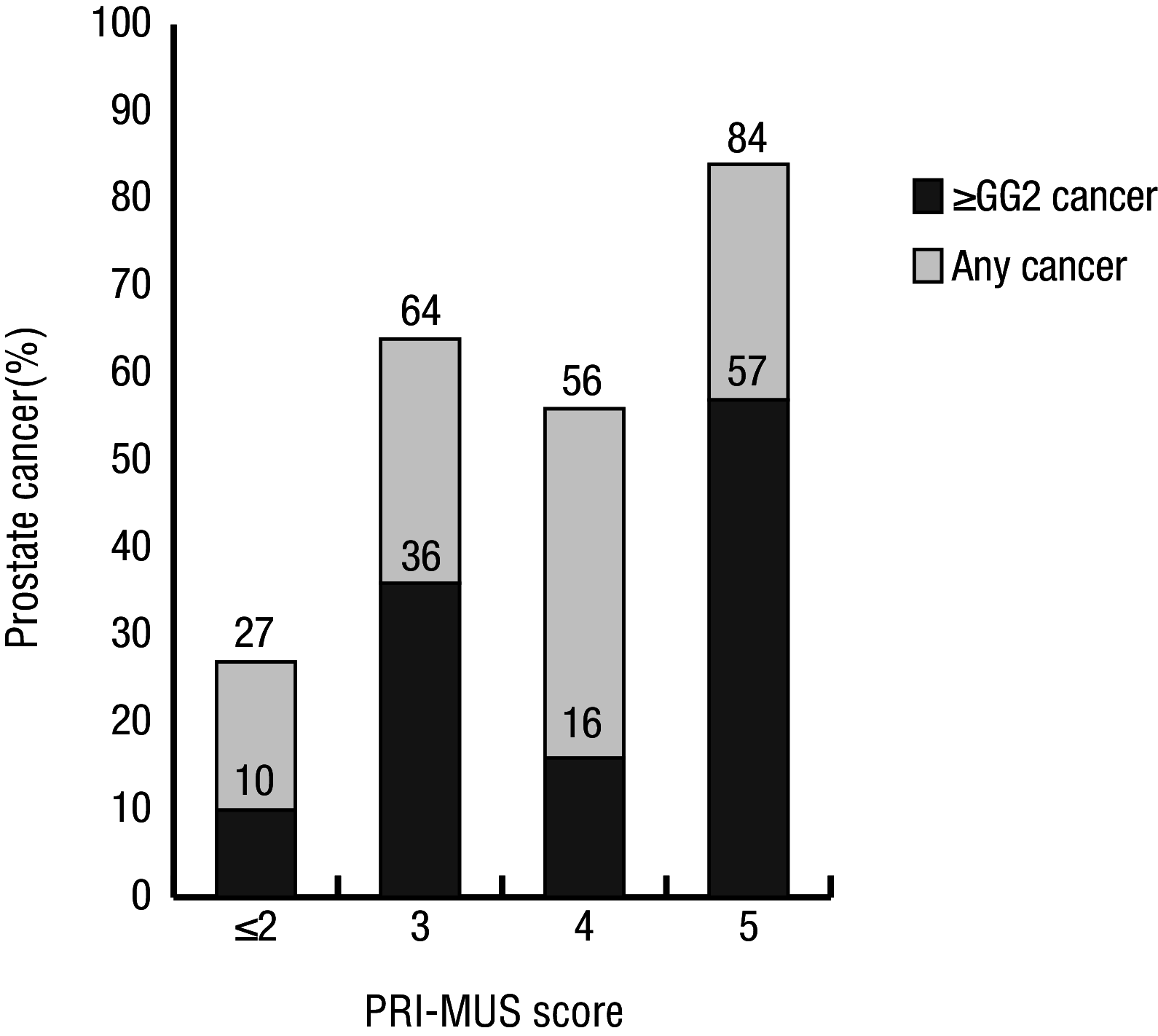Detection of clinically significant prostate cancer by micro-ultrasound-informed systematic biopsy during MRI/micro-ultrasound fusion biopsy
- PMID: 36486174
- PMCID: PMC10073530
- DOI: 10.5489/cuaj.8094
Detection of clinically significant prostate cancer by micro-ultrasound-informed systematic biopsy during MRI/micro-ultrasound fusion biopsy
Abstract
Introduction: High-resolution micro-ultrasound (microUS) is a novel imaging technique that may visualize clinically significant prostate cancer (csPCa), including those missed by magnetic resonance imaging (MRI ), in real time during prostate biopsy.
Methods: From September 2021 to January 2022, 75 consecutive biopsy-naive men were entered into an observational cohort. All men underwent an MRI /microUS fusion prostate biopsy, completed by a single surgeon using the ExactVU device. At time of biopsy, each biopsy core was given a Prostate Risk Identification using MicroUS (PRI-MUS) score. Anonymized data were entered into a RED Cap database. Cancer detection stratified by Prostate Imaging-Reporting & Data System (PI-RADS ) and PRI-MUS score, and imaging modality was captured. Our primary outcome was the detection rate of csPCa in microUS-informed systematic biopsy cores, taken outside MRI-visible lesions, during MRI /microUS fusion prostate biopsy.
Results: A median of three MRI-targeted and 12 microUS-informed systematic cores were taken per patient. MRI /microUS biopsy detected PCa in 84%, with csPCa detected in 52%. Of the 900 microUS-informed systematic cores, 105 cores were PRI-MUS ≥3 and 795 cores were PRI-MUS ≤2. csPCa was detected in 35% of the PRI-MUS ≥3 cores compared to 10% of the PRI-MUS ≤2 cores (p<0.0001). Detection of csPCa varied by core type: 8% of patients were diagnosed by MRI-targeted cores only, 38% were diagnosed by microUS-informed systematic cores only, and 54% were diagnosed by both.
Conclusions: MicroUS-informed systematic biopsy may be a useful adjunct to MRI, with PRI-MUS ≥3 systematic cores having a 3.5-fold increased risk of csPCa compared to PRI-MUS ≤2 cores.
Conflict of interest statement
COMPETING INTERESTS: Dr. Fung is a shareholder in Mikata Health and is currently a councillor (elected physician member) for the College of Physicians and Surgeons of Alberta. Dr. Kinnaird has participated in a clinical trial supported by Exact Imaging (with no overlap with the current paper). The remaining authors do not report any competing personal or financial interests related to this work.
Figures

References
-
- Elkhoury FF, Felker ER, Kwan L, et al. Comparison of targeted vs. systematic prostate biopsy in men who are biopsy naive: The prospective assessment of image registration in the diagnosis of prostate cancer (PAIREDCAP) study. JAMA Surg. 2019;154:811–8. doi: 10.1001/jamasurg.2019.1734. - DOI - PMC - PubMed
LinkOut - more resources
Full Text Sources
Research Materials
Miscellaneous
